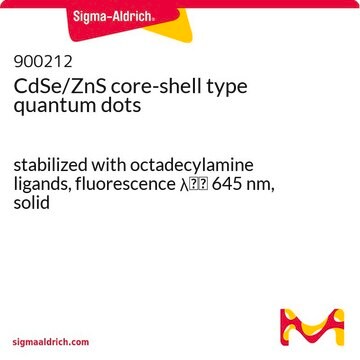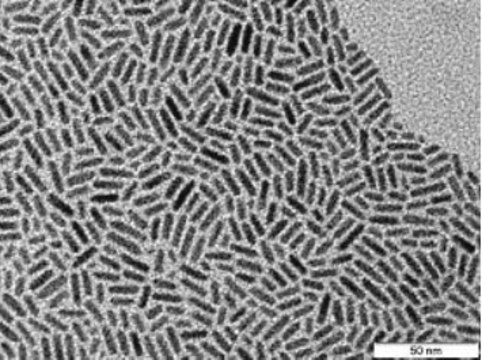900224
CdSe/ZnS core-shell type quantum dots
carboxylic acid functionalized, fluorescence λem 620 nm, 1 mg/mL in H2O
Synonym(s):
Fluorescent nanocrystals, QDs
About This Item
Recommended Products
form
dispersion
Quality Level
concentration
1 mg/mL in H2O
fluorescence
λem 620 nm
λem 620 nm±10 nm, quantum yield >50%
functional group
carboxylic acid
storage temp.
2-8°C
Looking for similar products? Visit Product Comparison Guide
Related Categories
General description
Application
Legal Information
hcodes
pcodes
Hazard Classifications
Aquatic Chronic 2
Storage Class
12 - Non Combustible Liquids
wgk_germany
WGK 3
flash_point_f
Not applicable
flash_point_c
Not applicable
Choose from one of the most recent versions:
Already Own This Product?
Find documentation for the products that you have recently purchased in the Document Library.
Articles
Cadmium-free quantum dots for bioimaging offer design and synthesis strategies, enhancing bioimaging and sensing applications.
Our team of scientists has experience in all areas of research including Life Science, Material Science, Chemical Synthesis, Chromatography, Analytical and many others.
Contact Technical Service






